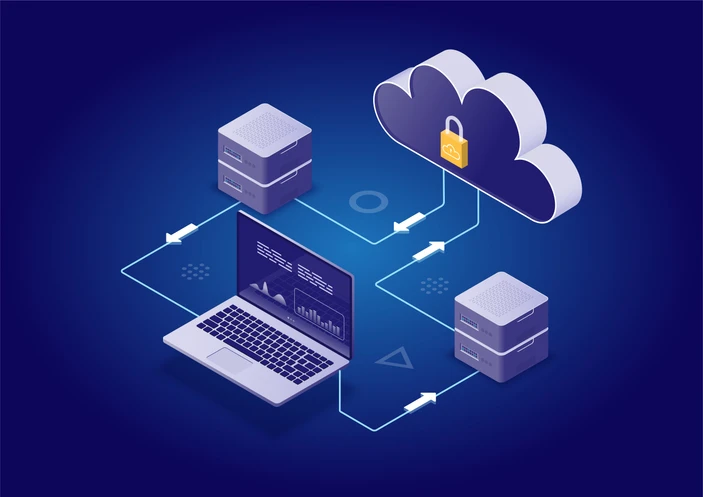Key Benefits of Using EDR Solutions
Endpoint Detection and Response (EDR) solutions are becoming a cornerstone of modern cybersecurity strategies. As organizations face increasingly sophisticated cyber threats, EDR provides a comprehensive approach to endpoint security that goes beyond traditional antivirus or firewall protections. Below are some of the key benefits of implementing EDR solutions:
- Real-Time Threat Detection One of the most significant advantages of EDR is its ability to detect threats in real time. Traditional security tools often rely on signature-based detection, which may not recognize new or evolving threats. EDR solutions, however, use behavioral analysis and advanced algorithms to identify suspicious activities as they happen, allowing your organization to act before damage occurs.
- Enhanced Incident Response EDR tools streamline the incident response process by automating many of the initial steps, such as identifying the affected endpoint, isolating the threat, and mitigating its impact. This reduces the response time significantly, limiting the scope of potential damage and helping your security team focus on more complex tasks.
- Comprehensive Endpoint Visibility With EDR, organizations gain complete visibility into all endpoints, including laptops, desktops, servers, and mobile devices. This level of insight ensures that no activity goes unnoticed, enabling your team to monitor, analyze, and address threats across your entire network.
- Proactive Threat Hunting EDR solutions empower security teams to take a proactive approach by actively hunting for threats before they materialize into full-blown incidents. With threat intelligence integration and historical data analysis, EDR provides the tools necessary to uncover hidden vulnerabilities and suspicious patterns.
- Reduced Downtime and Business Disruption Cyberattacks can cause significant downtime, leading to lost productivity and revenue. By quickly detecting and responding to threats, EDR minimizes disruptions and ensures that business operations continue with minimal impact. Automated remediation features further enhance this benefit by resolving threats without requiring manual intervention.
- Regulatory Compliance and Reporting Many industries are subject to strict cybersecurity regulations. EDR solutions provide detailed logging, reporting, and compliance management tools that help organizations meet regulatory requirements. This not only reduces the risk of fines but also demonstrates a strong commitment to data protection.
- Scalability for Growing Organizations As businesses expand, so do their security needs. EDR solutions are designed to scale effortlessly, accommodating new endpoints and users without compromising performance. Whether your organization is small or enterprise-level, EDR adapts to meet your unique requirements.
The Difference Between EDR and Traditional Antivirus
While both Endpoint Detection and Response (EDR) and traditional antivirus solutions aim to protect your endpoints from cyber threats, they differ significantly in their approach, capabilities, and overall effectiveness. Understanding these differences is crucial for businesses looking to build a robust cybersecurity strategy.
- Detection Methods Traditional antivirus software primarily relies on signature-based detection. This means it identifies threats by comparing files and processes against a database of known malware signatures. While effective against established threats, this method struggles with detecting new or unknown threats, such as zero-day attacks or advanced persistent threats (APTs).
EDR, on the other hand, uses behavioral analysis and machine learning to detect suspicious activities. Instead of relying solely on known signatures, EDR monitors endpoint behavior in real time, identifying anomalies that could indicate malicious activity. This approach allows EDR to detect and respond to threats that traditional antivirus might miss.
- Scope of Protection Antivirus solutions are typically focused on preventing malware infections by scanning files, email attachments, and downloads for malicious content. Their scope is often limited to these predefined parameters, which can leave gaps in your security coverage.
EDR provides a broader scope of protection by continuously monitoring all endpoint activities, including file executions, network connections, and system processes. It also provides deeper insights into how an attack occurred, enabling more informed decisions for prevention and mitigation.
- Incident Response Capabilities Traditional antivirus solutions are primarily designed for prevention. Once malware is detected, they quarantine or delete the infected files but often lack advanced response capabilities.
In contrast, EDR is built for both prevention and response. It enables organizations to take proactive measures during an attack, such as isolating affected endpoints, terminating malicious processes, and rolling back compromised systems to their pre-attack state. These advanced response features significantly reduce the potential impact of an attack.
- Visibility and Analytics Antivirus tools generally provide limited visibility into threats and endpoint activity. They may alert you to the presence of malware but often lack context about how the threat entered your system or what actions it performed.
EDR excels in visibility and analytics, offering detailed logs and insights into the entire attack lifecycle. It helps security teams understand the root cause of incidents, track threat propagation, and identify vulnerabilities that need to be addressed.
- Proactive vs. Reactive Approach Traditional antivirus tools operate reactively, focusing on mitigating threats after they are detected. This approach can leave businesses vulnerable to sophisticated and fast-evolving attacks.
EDR takes a proactive stance, empowering organizations to hunt for threats before they cause harm. With capabilities like threat intelligence integration and anomaly detection, EDR enables businesses to stay ahead of attackers.
- Suitability for Modern Threats The cyber threat landscape has evolved, with attackers using increasingly complex tactics to bypass traditional defenses. While antivirus solutions remain useful for basic malware protection, they are often inadequate for addressing advanced threats.
EDR is specifically designed to handle modern threats by providing a comprehensive, real-time defense mechanism. Its ability to adapt to new attack vectors and provide actionable insights makes it a vital component of any modern cybersecurity framework.
Choosing the Right EDR Solution for Your Business
Selecting the right Endpoint Detection and Response (EDR) solution is a critical decision for ensuring robust cybersecurity for your organization. With a variety of options available, it’s important to understand the key factors to consider to make an informed choice that aligns with your specific needs and goals.
- Understand Your Security Needs Every business has unique security requirements based on its size, industry, and infrastructure. Start by assessing your current cybersecurity posture and identifying any gaps or vulnerabilities. Consider factors such as the number of endpoints, the types of data you handle, and the potential risks your organization faces. This assessment will help you determine the features and capabilities you need in an EDR solution.
- Real-Time Threat Detection and Response One of the core functions of any EDR solution is real-time threat detection and response. Look for solutions that offer advanced detection capabilities, such as behavioral analysis and machine learning, to identify and mitigate threats as they occur. The faster an EDR solution can respond to an incident, the lower the risk of data breaches or operational disruption.
- Ease of Deployment and Integration The ideal EDR solution should be easy to deploy and integrate seamlessly with your existing IT infrastructure and security tools. Solutions that are compatible with your current systems and require minimal configuration can save time and reduce the risk of implementation errors. Cloud-based EDR solutions are often a great choice for businesses looking for quick deployment and scalability.
- Comprehensive Endpoint Visibility Visibility is a cornerstone of effective endpoint security. Choose an EDR solution that provides comprehensive monitoring of all endpoints, including laptops, servers, mobile devices, and IoT devices. The solution should offer detailed insights into endpoint activities, helping you identify potential threats and vulnerabilities across your network.
- Scalability and Flexibility As your business grows, your cybersecurity needs will evolve. Ensure that the EDR solution you choose can scale with your organization. Look for solutions that can accommodate additional endpoints, users, and features without compromising performance or requiring costly upgrades.
- Automation and AI Capabilities Automation is crucial for improving efficiency and reducing the workload on your IT team. Look for EDR solutions that offer automated threat detection, response, and remediation capabilities. Artificial intelligence (AI) and machine learning-powered features can enhance threat detection accuracy and reduce false positives.
- Threat Intelligence Integration An effective EDR solution should integrate with threat intelligence platforms to stay updated on the latest attack methods and vulnerabilities. This integration ensures that your system is always prepared to handle emerging threats and provides actionable insights to strengthen your defenses.
- User-Friendly Interface and Reporting The usability of an EDR solution is another critical factor. Choose a solution with an intuitive interface that allows your IT team to quickly navigate and manage security tasks. Additionally, robust reporting capabilities that provide detailed logs, dashboards, and compliance reports can streamline threat analysis and auditing processes.
- Vendor Reputation and Support The reliability of the vendor is an essential consideration. Research the reputation, customer reviews, and case studies of potential EDR providers. Ensure that the vendor offers reliable customer support, training, and regular updates to keep your EDR solution effective over time.
- Cost vs. Value Finally, evaluate the cost of the EDR solution in relation to the value it provides. While budget constraints are important, prioritize solutions that offer comprehensive protection, scalability, and advanced features, even if they come at a slightly higher cost. The long-term benefits of robust cybersecurity often outweigh the initial investment.






